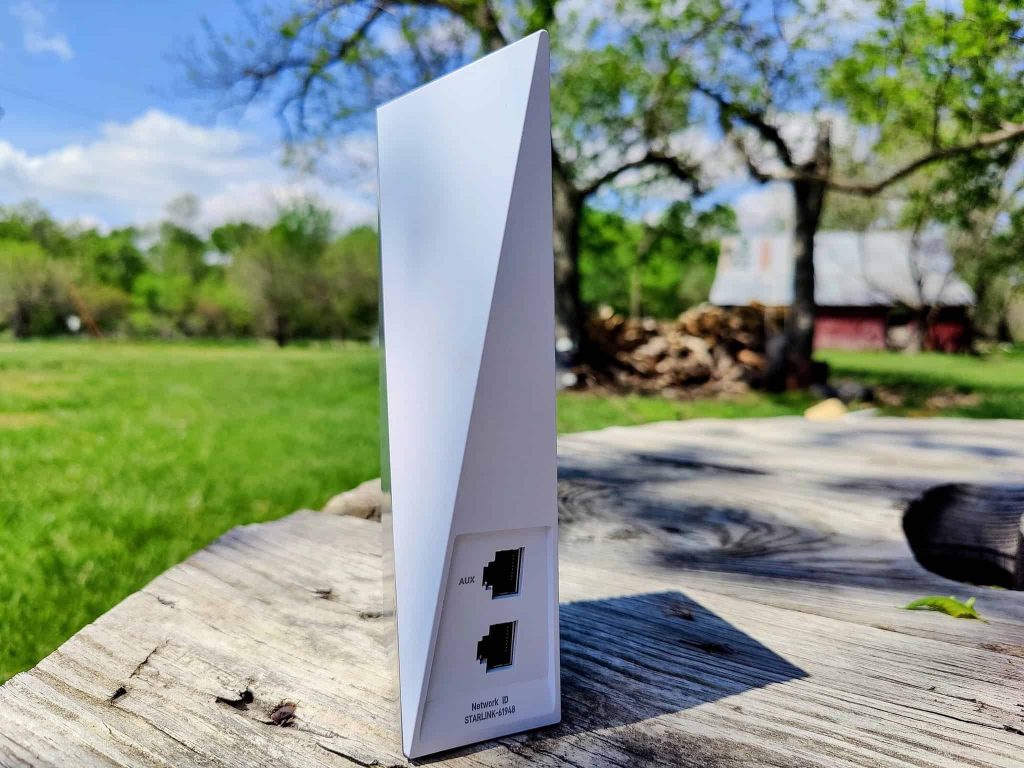The Starlink kit includes one dish, a Wi-Fi router base unit, and a dish mount. It also comes with a power cord for the base unit and a cable that is 75 feet long used to connect the router to the dish. Longer cables, extra mounting gear, and Ethernet adapters are some additional accessories that may be purchased separately.
There is an easy-to-follow illustration-only instruction sheet in the package. Each end of the cable has the same kind of connection but a distinct plug form. This makes it easy to remember which end goes into the dish and which into the bottom unit. Each connector is sealed to keep out moisture, so you don’t have to worry about it getting damaged during severe weather conditions.
Getting a live connection after opening the box is a rather short procedure; however, finding the ideal location for the dish to get maximum performance may take more time.
Contents
How Can You Get Starlink?
Easy installation and setup make Starlink a great choice for residential use. To sign up for Starlink, you must visit Starlink.com, verify that your address is within Starlink’s coverage region, and fill out a short form.
Signing up is quick and easy; you only need your billing information and a physical address. You’ll find out throughout the registration process whether you’ll get your Starlink kit within the standard 2-week period or be put on a waitlist for an indefinite length of time.
Once up and running, It’s convenient and easy to pay your monthly bill online, and after you’ve set up your account, you can forget about it. You can discontinue your subscription using the same online dashboard, and there are no fines or penalties associated with doing so.
Unboxing the Starlink Kit
Once you open the Starlink box, the contents of the package should include the following: installation instructions; the Starlink receiver dish; a mounting base; the Wi-Fi router; and a 75-foot cable for connecting the dish to the router.
There is a power cord included with the router, but the dish doesn’t require it since it draws its power and data from the same connection cable.
The Starlink Wi-Fi router is the hub of your whole Starlink network and the key to its lightning-fast speeds. Following best practices for installing conventional Wi-Fi routers would help you choose an appropriate spot for the router.
How to Install Starlink?
Assemble the Dish, Stand, and Cable
You should build the dish and mounting base after unpacking your Starlink kit. To get started, unhook the cable from the dish; it will come connected, but you’ll need to disconnect it before you can seat the dish mast into the mounting base.
You should then place the dish mast into the mounting base. Make sure the mast’s groove is flush with the mount’s rail.
After setting up the mast, you can connect it using the straight plug connection at the end of the 75-foot connecting cable. It should be easy to identify the right end of the cable, given that the two ends have distinct connections.
Find a Good Position for the Dish
After assembling the dish, it must be mounted and positioned properly to receive satellite signals.
Use the Starlink app to discover a decent spot; it features an interactive tool to help you find and confirm the right location for a new dish, and the rules are simple enough that anybody can use it. A clear sky view of at least 100 degrees above and surrounding the dish is required.
Since the dish does not retain a stable orientation, it requires a large clear expanse of sky. The dish may be fixed in one spot, but its motor allows it to continually realign itself to maintain a connection with moving satellites.
Mount the Dish
Mount the dish after scanning and verifying your location. There are screw-mounting holes in each of the four feet of the mounting base. These can be used to secure the mount to a flat surface, such as a roof, or the ground for tent stakes. The screws and stakes are not included in the set, so you will need to buy them separately.
You’ll need to buy an extra adapter if you want to attach your satellite dish differently, like on a pole or with an existing satellite dish mounting assembly.
Run the Cable
After you set up the dish, you’ll need to connect it to your network with a cable. Usually, this entails bringing the cable inside the house.
Starlink offers a variety of cable routing attachments, including those designed to go around hard surfaces like brick or concrete.
Once you’ve brought the cable inside your house, you must connect it to your Wi-Fi router. Use the angled plug on the 75-foot connector cord for this purpose. Again, the unique design of the plug connection should make it easy to identify. It only works with Starlink routers and only when plugged in correctly.
You’ll also need to connect the router’s power cord, which supplies power to the device and the satellite dish.
Return to the Starlink app once your network is up and running. You may assess the state of your internet connection there.
Wait a minute as the dish contacts the satellites in the sky. The procedure is fast but not immediate. When your dish finally connects, the app will let you know you’re online and ask you to choose a network name and password.
Bottom line
When you’re done, you should be able to connect to the internet. Remember that it may take some time to get the advertised speeds. After installing the Starlink system, it can take up to 12 hours to attain peak performance.
During this time, the system checks for updates to drivers, scans and maps the satellites in its immediate vicinity, and determines the best possible dish orientation for communicating with the various satellites in the sky. You shouldn’t have to worry about fine-tuning the configuration since they adjust automatically.
